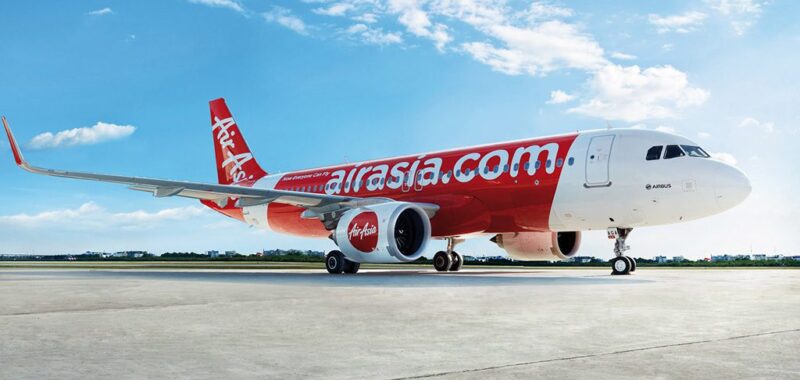AirAsia plans to open a new hub in the Gulf before the end of the year to tap Europe-bound traffic and boost Southeast Asia–Middle East connectivity, CEO Tony Fernandes said in an interview with Dubai Eye radio.
The Malaysian low-cost carrier is considering four airports for its expansion, including Ras Al Khaimah and a destination in Saudi Arabia.
“We are in discussion with four cities, to be absolutely fair and transparent … [but] I don’t want to make any comment right now on who we are talking to. But I can be very open that countries that are interested in us and [those] we are interested in … includes Saudi Arabia, [and] Ras Al Khaimah as well,” Fernandes said.
He ruled out Dubai and Sharjah as possible options. “Sharjah is well served by a very good airline, Air Arabia. And Dubai wouldn’t be somewhere that we looked at. That’s a big airport, a complicated airport,” he said.
“Dubai wouldn’t really benefit from an AirAsia. It’s so successful already. But other Emirates, other places in the Gulf would benefit tremendously from the traffic we could bring both ways,” Fernandes added.
Why Ras Al Khaimah or Saudi?
Connecting with Europe is an important part of the strategy, and new long-range aircraft makes it possible.
“[We have an] Airbus 321 Long Range and the second one is a 321XLR. That allows us with one stop to probably get to most of the world,” Fernandes said. “We want to extend our successful Asian operation to the world and allow people in South-East Asia and Asean and people in Europe to go to places.”
Europe is a huge market for Ras Al Khaimah. In the first quarter of this year, the emirate’s largest international source markets were Russia, the UK, and Kazakhstan. Poland, Germany, Belarus, and the Czech Republic were all in the top 10. (Russia is Ras Al Khaimah’s largest source market by far, accounting for 27% of all visits during the quarter, or 47,000 people.)
AirAsia’s parent company Capital A has signaled a wider push into Saudi Arabia, with plans announced in May to grow its network to Riyadh and Dammam and ramp up Kuala Lumpur–Jeddah flights.
“We believe the new Riyadh route is projected to serve close to one million two-way passengers by 2026 and more than seven million by 2030, reflecting strong demand for increased connectivity between Asean and the Gulf region,” Fernandes said in May.
Of the 29.7 million international tourists visiting Saudi last year, 2.4 million came from Europe. Asia Pacific, the MENA region, and the GCC were much larger markets, bringing in 9.7 million, 8.4 million, and 8 million visitors, respectively.
Fernandes said that a big benefit of being in the region is its geography, “right in the middle of the world.” The goal would be to create a new connections hub in the region. “I have been fascinated with Emirates and what they’ve done in connecting the world. But they are a full-service airline, I am trying to do what no other low-cost airline has done – to create a connecting airline, where you can go from one point to another point through a hub.”
“The Gulf is right in the middle of the world. My aim is to use a narrow-body aircraft to reach most of the world.”
Who Would Fund it?
According to the Financial Times, Fernandes also met with Gulf officials at the recent Paris Air Show to pitch the regional hub, shrugging off geopolitical volatility.
Asked if the new Gulf operation might include a local partner or sovereign backing, Fernandes told the radio station it was not essential.
“But it’s nice to have … we have to treat these two things as independent,” he said.
This is not AirAsia’s first Gulf foray. AirAsia X exited Abu Dhabi in 2010 for operational reasons, and later explored a Gulf-focused low-cost carrier concept.
Tony Fernandes will be speaking on stage at the Skift Global Forum 2025, taking place September 16-18.
Watch Tony Fernandes Speak at Skift Global Forum East 2024
Airlines Sector Stock Index Performance Year-to-Date
What am I looking at? The performance of airline sector stocks within the ST200. The index includes companies publicly traded across global markets including network carriers, low-cost carriers, and other related companies.
The Skift Travel 200 (ST200) combines the financial performance of nearly 200 travel companies worth more than a trillion dollars into a single number. See more airlines sector financial performance.
Read the full methodology behind the Skift Travel 200.

